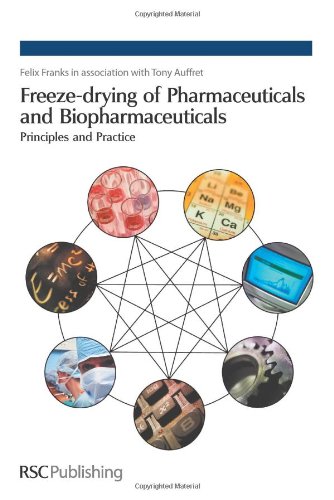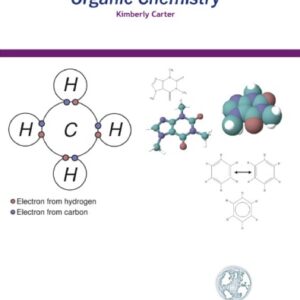Freeze-drying, in the past popular in the food industry, has more recently been adopted by the pharmaceutical industry as a standard method for the production of stable solid preparations. Freeze-drying of Pharmaceuticals and Biopharmaceuticals is the first book to specifically describe this process, as related to the pharmaceutical industry. The emphasis of this book is on the properties of the materials processed, how effective formulations are arrived at, and how they are stored and marketed. Beginning with a historical overview of the process, Freeze-drying of Pharmaceuticals and Biopharmaceuticals briefly describes the processes and equipment involved, including: the physics, chemistry and biochemistry associated with freezing, aspects of formulation development, primary and secondary drying; the economics and engineering of scaling up; and, most importantly, attributes of the dried product. It also discusses in detail the science behind freeze-drying, such as the properties of crystalline and amorphous solids. The book concludes with selected case studies and discusses the future of freeze-drying, advances in alternative drying methods, and concludes with an extensive bibliography. This book, written by a leading expert in the field, is aimed primarily at product and process developers in the biopharmaceutical industry and academia. Read more… Content: 1: Historical Background; 1.1: Drying as a preservation method; 1.2: The advent of industrial freeze-drying; 1.3: Elements of stability; 1.4: Why Freeze-Dry?; 1.5: Stability – the downside; 2: The Process Sequence in Summary; 2.1: Equipment; 2.2: The drying process – coupled heat and mass transfer; 2.3: How dry is “Dry”?; 2.4: Why not freeze-dry?; 3: Essential Product and Process Parameters; 3.1: General considerations; 3.2: Formulation parameters; 3.3: Process parameters; 3.4: The multidisciplinary nature of freeze-drying; 3.5: Conclusions; 4: Essential Physics of Low Temperature and Freezing; 4.1: Chill versus freezing – undercooling; 4.2: Deep chill – undercooled water; 4.3: Physical properties of undercooled water; 4.4: Ice – nucleation in undercooled water; 4.5: Ice – its crystallisation and crystal habits; 4.6: Nucleation and crystallisation of ice and solutes in aqueous solutions; 4.7: Polymorphic transitions, hydrates and transient hydrates; 4.8: Vitrification as avoidance of crystallisation; 4.9: Freezing in complex biological substrates; 5: Essential Chemistry and Biochemistry associated with low temperature and freezing; 5.1: Physicochemical properties of water-based systems under conditions of deep chill; 5.2: Cold inactivation of proteins; 5.3: Changing phase relationships during freezing; 5.4: Eutectic crystallisation of pH buffer components; 5.5: Effects of freeze concentration on reaction kinetics; 5.6: Complex ternary and multicomponent phase behaviour; 5.7: Supersaturation and vitrification: importance of the state diagram; 5.8: Aqueous glasses as solid solutions; 6: Physical properties of crystalline and amorphous solids; 6.1: Crystalline and amorphous solids – a comparison; 6.2: Non-equilibrium processes in amorphous solids; 6.3: Slow relaxation during cooling and heating; 6.4: The Glass Transition – a summary; 6.5: Amorphous states and freezing behaviour; 6.6: Materials science of the glass transition – its relevance to freeze-drying; 7: Excipients: their role in rational formulation design; 7.1: Definitions and classifications; 7.2: Attributes and requirements; 7.3: Estimation of Tg of complex mixtures; 7.4: Effects of excipients on product attributes; 7.5: Implications for freeze-drying; 7.6: Devitrification of excipients in dried amorphous preparations; 7.7: Pharmaceutical glasses – formulation aspects; 7.8: Constraints; 7.9: Operational degrees of freedom; 8: Primary Drying – the Sublimation of Ice; 8.1: Principles of coupled heat and mass transfer; 8.2: The model; 8.3: Heat transfer mechanisms; 8.4: Influences of formulation and freezing procedure on ice sublimation; 8.5: The interplay of pressure, temperature and time; 8.6: Adjustable parameters: Formulation, concentration and fill depth; 8.7: Ideal conditions; 8.8: Accelerated freeze-drying; 8.9: Monitoring ice sublimation; 8.10: Summary; 9: Secondary Drying; 9.1: Unfrozen (residual) water; 9.2: Removal of unfrozen water by diffusion; 9.3: Effects of pressure; 9.4: Effect of Water Content; 9.5: Effects of fill depth and cake morphology; 9.6: Effect of Temperature; 9.7: Softening and collapse; 9.8: Operational drying protocols – temperature ramping and stepwise heating; 10: Some Practical Aspects – Economics and Engineering; 10.1: Scale up and ICH manufacture; 10.2: Economics; 10.3: Vial closure; packaging; 10.4: Process monitoring and control; 10.5: Stability issues; 11: The Dried Product; 11.1: Physical state: crystalline or amorphous?; 11.2: Essential materials science of crystalline and amorphous products; 11.3: Essentials of thermoanalytical techniques; 11.4: Fragility and its estimation; 11.5: Monitoring physical and chemical stability; 11.6: Estimation of useful shelf life; 11.7: Dynamics in supersaturated solutions; 11.8: Residual water and its estimation; 11.9: Residual water: its influence on stability; 11.10: Unresolved issues; 11.11: Reconstitution at point of use; 12: Case Histories; 12.1: Introduction; 12.2: Choice of formulation; 12.3: Process cycle optimisation; 12.4: Concurrent product and process refinement; 12.5: Inadvertent failures – “unexpected problems”; 12.6: Unfamiliarity with freeze-drying parameters; 12.7: In situ water release during storage; 12.8: Summary and conclusions; 13: Beyond Freeze-drying; 13.1: Alternative water removal technologies; 13.2: Evaporative drying: principles and practice; 13.3: Evaporative drying: the current state; 13.4: Comparisons with freeze-drying; 14: Acknowledgements; 15: Bibliography Abstract: Aimed at product and process developers in the biopharmaceutical industry and academia, this is the first book to describe freeze-drying, as related to the pharmaceutical industry. Read more…
Chemistry
[PDF] Freeze-drying of pharmaceuticals and biopharmaceuticals: principles and practice Felix Franks
$19.99






Reviews
There are no reviews yet.